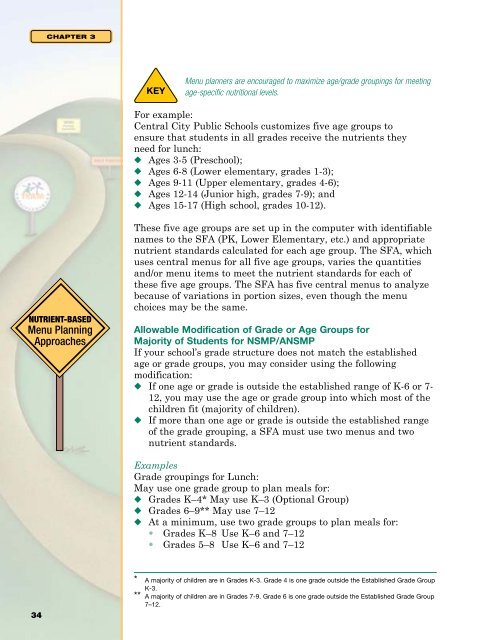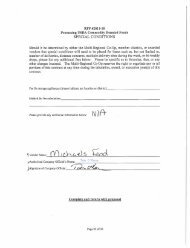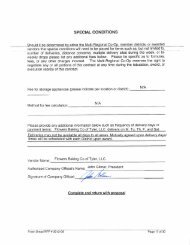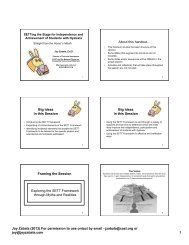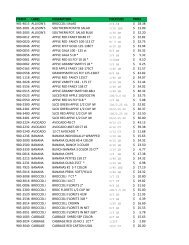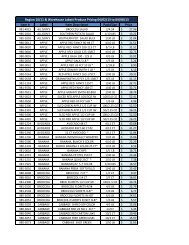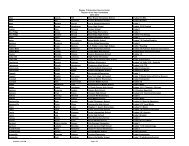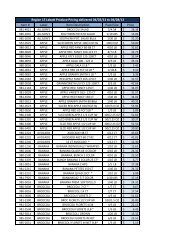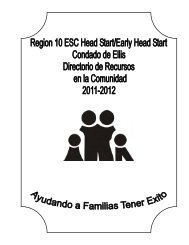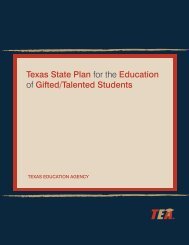Road to SMI Success Manual - Region 10 Education Service Center
Road to SMI Success Manual - Region 10 Education Service Center
Road to SMI Success Manual - Region 10 Education Service Center
Create successful ePaper yourself
Turn your PDF publications into a flip-book with our unique Google optimized e-Paper software.
Chapter 3<br />
Menu planners are encouraged <strong>to</strong> maximize age/grade groupings for meeting<br />
age-specific nutritional levels.<br />
For example:<br />
Central City Public Schools cus<strong>to</strong>mizes five age groups <strong>to</strong><br />
ensure that students in all grades receive the nutrients they<br />
need for lunch:<br />
◆<br />
◆<br />
◆<br />
◆<br />
◆<br />
Ages 3-5 (Preschool);<br />
Ages 6-8 (Lower elementary, grades 1-3);<br />
Ages 9-11 (Upper elementary, grades 4-6);<br />
Ages 12-14 (Junior high, grades 7-9); and<br />
Ages 15-17 (High school, grades <strong>10</strong>-12).<br />
Nutrient-Based<br />
Menu Planning<br />
Approaches<br />
These five age groups are set up in the computer with identifiable<br />
names <strong>to</strong> the SFA (PK, Lower Elementary, etc.) and appropriate<br />
nutrient standards calculated for each age group. The SFA, which<br />
uses central menus for all five age groups, varies the quantities<br />
and/or menu items <strong>to</strong> meet the nutrient standards for each of<br />
these five age groups. The SFA has five central menus <strong>to</strong> analyze<br />
because of variations in portion sizes, even though the menu<br />
choices may be the same.<br />
Allowable Modification of Grade or Age Groups for .<br />
Majority of Students for NSMP/ANSMP<br />
If your school’s grade structure does not match the established<br />
age or grade groups, you may consider using the following<br />
modification:<br />
◆ If one age or grade is outside the established range of K-6 or 7-<br />
12, you may use the age or grade group in<strong>to</strong> which most of the<br />
children fit (majority of children).<br />
◆ If more than one age or grade is outside the established range<br />
of the grade grouping, a SFA must use two menus and two<br />
nutrient standards.<br />
Examples<br />
Grade groupings for Lunch:<br />
May use one grade group <strong>to</strong> plan meals for:<br />
◆<br />
◆<br />
◆<br />
Grades K–4* May use K–3 (Optional Group)<br />
Grades 6–9** May use 7–12<br />
At a minimum, use two grade groups <strong>to</strong> plan meals for:<br />
•<br />
•<br />
Grades K–8 Use K–6 and 7–12<br />
Grades 5–8 Use K–6 and 7–12<br />
3434<br />
* A majority of children are in Grades K-3. Grade 4 is one grade outside the Established Grade Group<br />
K-3.<br />
** A majority of children are in Grades 7-9. Grade 6 is one grade outside the Established Grade Group<br />
7–12.


